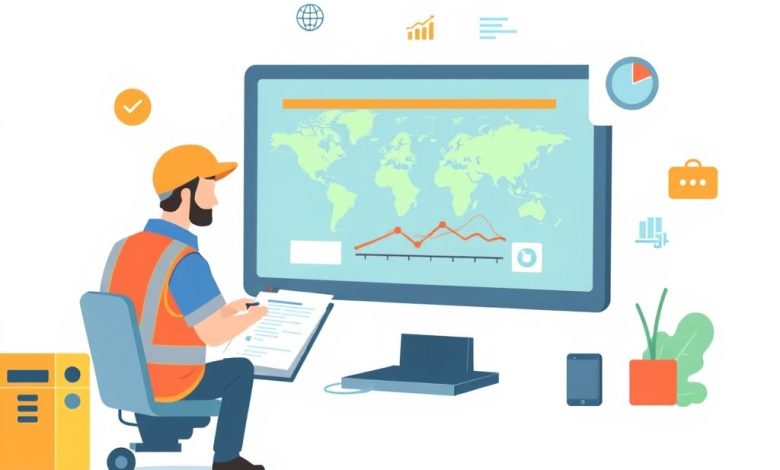Field Service Management with B2B Portal Integration Enhancing Customer Experience and Operational Efficiency

Introduction
Field Service Management (FSM) refers to the processes and systems used to manage and optimize field-based workforces. In today’s digital age, integrating Business-to-Business (B2B) portals into FSM systems has become increasingly crucial for businesses seeking to streamline operations, enhance customer satisfaction, and improve overall efficiency. This article explores the concept of Field Service Management with B2B Portal Integration, its benefits, challenges, and best practices.
- What is Field Service Management?
- The Role of B2B Portals in Field Service Management
- Benefits of Integrating B2B Portals with Field Service Management
- Improved Efficiency
- Enhanced Customer Experience
- Real-time Data Access
- Cost Reduction
- Scalability and Flexibility
- Challenges in Implementing B2B Portal Integration
- Best Practices for Implementing B2B Portal Integration in Field Service Management
- Conduct Thorough Planning
- Ensure Proper Training
- Implement Robust Security Measures
- Regularly Monitor and Evaluate
- Foster Collaboration
- Conclusion
What is Field Service Management?
Field Service Management encompasses all activities related to managing and coordinating tasks performed by employees who work outside of a traditional office environment. These tasks typically involve visiting customers’ premises, diagnosing issues, performing maintenance or repairs, and providing services directly to end-users.
Key components of Field Service Management include:
- Scheduling and dispatching
- Resource allocation
- Inventory management
- Work order processing
- Customer relationship management
- Performance tracking and reporting
The Role of B2B Portals in Field Service Management
Business-to-Business portals have revolutionized how companies interact with their partners, suppliers, and clients. When integrated with Field Service Management systems, B2B portals offer numerous advantages:
- Improved communication channels
- Enhanced data sharing capabilities
- Streamlined workflow processes
- Increased transparency and accountability
- Better resource allocation and utilization
Benefits of Integrating B2B Portals with Field Service Management
Implementing B2B portal integration within Field Service Management systems provides several significant benefits:
Improved Efficiency
By centralizing information and automating routine tasks, B2B portal integration enhances operational efficiency. Technicians can quickly access relevant customer data, work orders, and inventory information without having to navigate through multiple systems.
Enhanced Customer Experience
B2B portal integration allows customers to easily schedule appointments, track service status, and access historical records. This level of transparency and control contributes to increased customer satisfaction and loyalty.
Real-time Data Access
With B2B portal integration, field technicians can access real-time data on job assignments, inventory levels, and customer preferences while on-site. This enables them to make informed decisions and respond promptly to changing circumstances.
Cost Reduction
Automated scheduling, optimized routing, and improved resource allocation resulting from B2B portal integration can lead to significant cost savings for organizations.
Scalability and Flexibility
B2B portal integration allows businesses to adapt more easily to changes in market conditions, customer needs, and technological advancements.
Challenges in Implementing B2B Portal Integration
While the benefits of B2B portal integration in Field Service Management are substantial, there are also challenges to consider:
Integration Complexity
Integrating B2B portals with existing FSM systems can be technically complex, requiring careful planning and execution.
Security Concerns
Ensuring the security of sensitive business and customer data when sharing it across platforms is a critical concern.
User Adoption
Encouraging widespread adoption of new systems among field technicians and other stakeholders can be challenging.
Training Requirements
Implementing new technologies often necessitates extensive training for staff, which can be time-consuming and costly.
Best Practices for Implementing B2B Portal Integration in Field Service Management
To overcome the challenges and maximize the benefits of B2B portal integration in Field Service Management, consider the following best practices:
Conduct Thorough Planning
Before implementation, thoroughly analyze current processes, identify areas for improvement, and define clear objectives for the integration project.
Ensure Proper Training
Provide comprehensive training to all users, including both technical staff and non-technical personnel who will interact with the system.
Implement Robust Security Measures
Develop and enforce strict security protocols to protect sensitive data shared through the B2B portal.
Regularly Monitor and Evaluate
Continuously monitor the performance of the integrated system and gather feedback from users to identify areas for improvement.
Foster Collaboration
Encourage cross-departmental collaboration between IT, operations, and customer service teams to ensure seamless integration and optimal utilization of the new system.
Conclusion
Field Service Management with B2B Portal Integration represents a powerful combination that can significantly enhance operational efficiency, customer satisfaction, and bottom-line results. By leveraging the strengths of both FSM and B2B portal technology, organizations can create more agile, responsive, and customer-centric service delivery models.
As the field service industry continues to evolve, embracing innovative technologies like B2B portal integration will be crucial for businesses looking to stay competitive and meet the ever-growing expectations of their customers. Whether you’re a seasoned field service manager or just starting to explore the possibilities of FSM with B2B portal integration, this technology offers exciting opportunities for transformation and growth in your organization.




